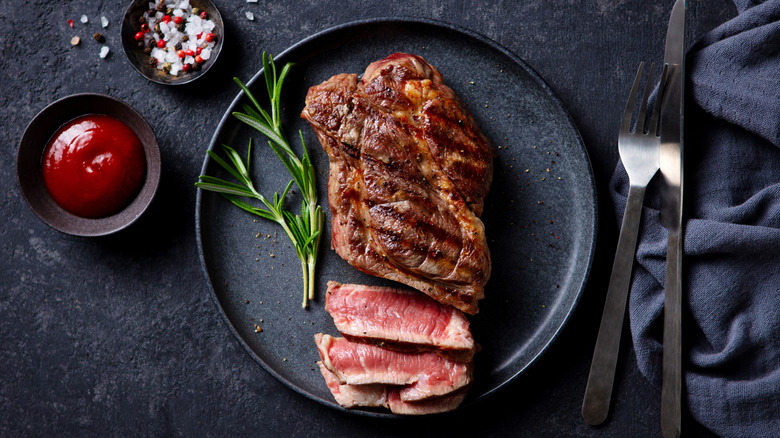Are There Really Steaks That Shouldn't Be Cooked Medium Rare?
The argument around what level of doneness you should cook steaks to is pervasive among food lovers, and it'll likely never die down. However, one point that's not talked about nearly enough is how the cut of steak affects the temperature you'll want to cook it to. While you should always enjoy lean steaks cooked to rare or medium rare, there are others that just won't be as good or might be downright unpleasant at such a low internal temperature.
To gain insight into what steaks should and should not be cooked medium rare, we spoke with K.C. Gulbro, owner of FoxFire Steakhouse. He explained that the ideal doneness of a steak comes down to the specific qualities the cut has. "Steaks cook differently because every cut comes from a different muscle on the animal, and each muscle has its own level of tenderness, fat, and connective tissue," Gulbro explained.
"Cuts that work a little harder, like skirt, flank, or bavette, have more connective tissue, so they actually eat better closer to medium, where that tissue starts to break down," Gulbro said — that's between 135 and 140 degrees Fahrenheit. On the other hand, cuts like filet and ribeye should not be cooked as long. "They're best cooked hot and fast and served rare to medium-rare to keep them juicy and tender," he shared, which is between 125 and 135 degrees Fahrenheit.
Beef cuts that should never be cooked medium rare
Tougher beef cuts, like brisket, chuck, and short ribs, are better once they reach a higher internal temperature. They need to be slow-roasted or even simmered for a bowl of beef stew to get the taste and texture you're looking for. "Those need to be cooked low-and-slow until they reach higher internal temps, so the collagen melts and the meat becomes tender and flavorful," K.C. Gulbro explained. The 135 degrees Fahrenheit target for a medium-rare steak falls roughly 60 degrees below the ideal internal temperature for cuts that come from these hardworking muscles.
This is also why you should keep cuts of beef like brisket far away from the grill, though slow-smoking is totally fine. While medium rare is not ideal for every cut of beef in existence, the temperature you cook your steak to ultimately comes down to personal preference above all else. "At the end of the day, the ideal doneness depends on the cut and the person ordering it," Gulbro reminded us, adding, "Some people love a well-done filet; some like a little pink in their brisket."

